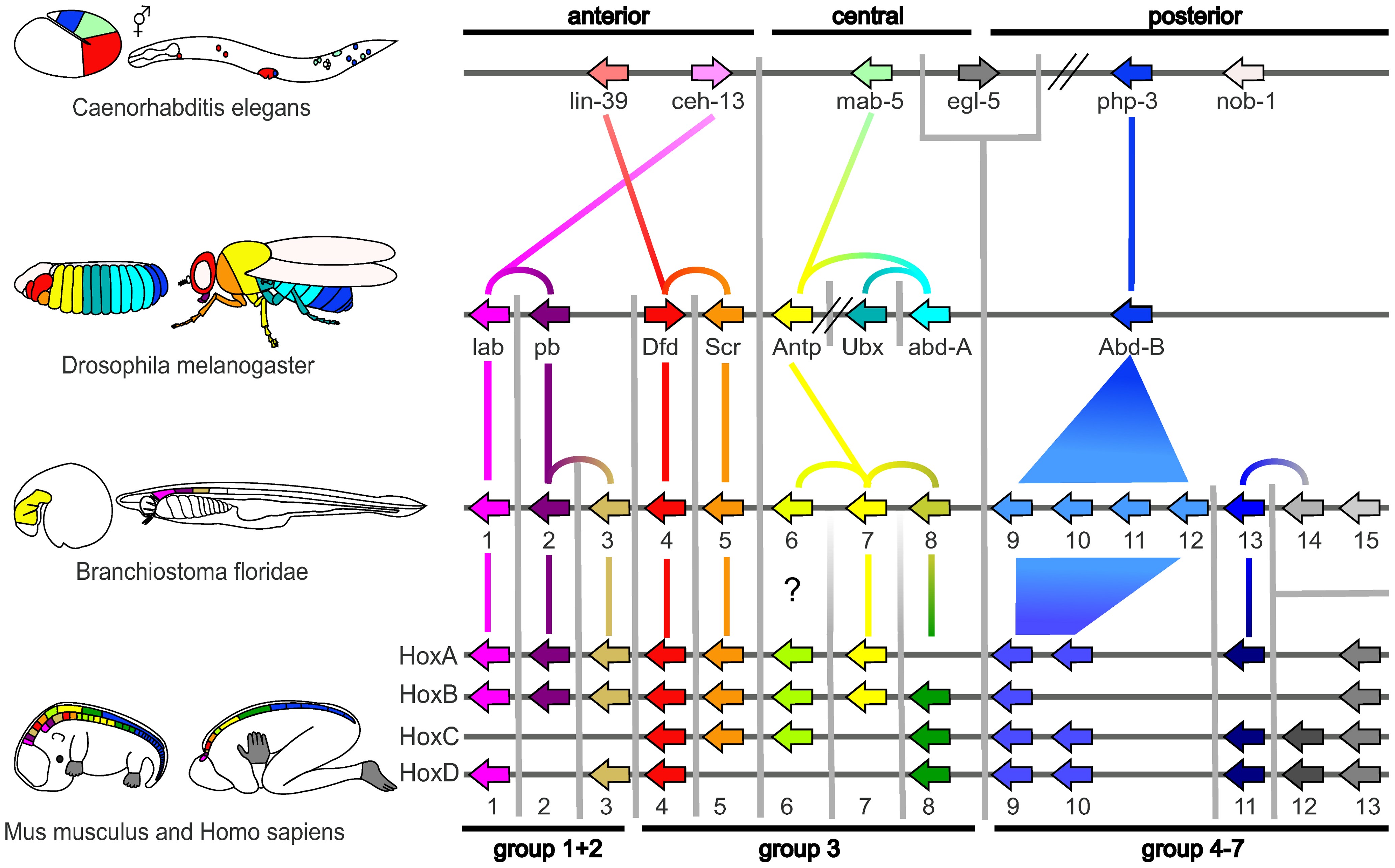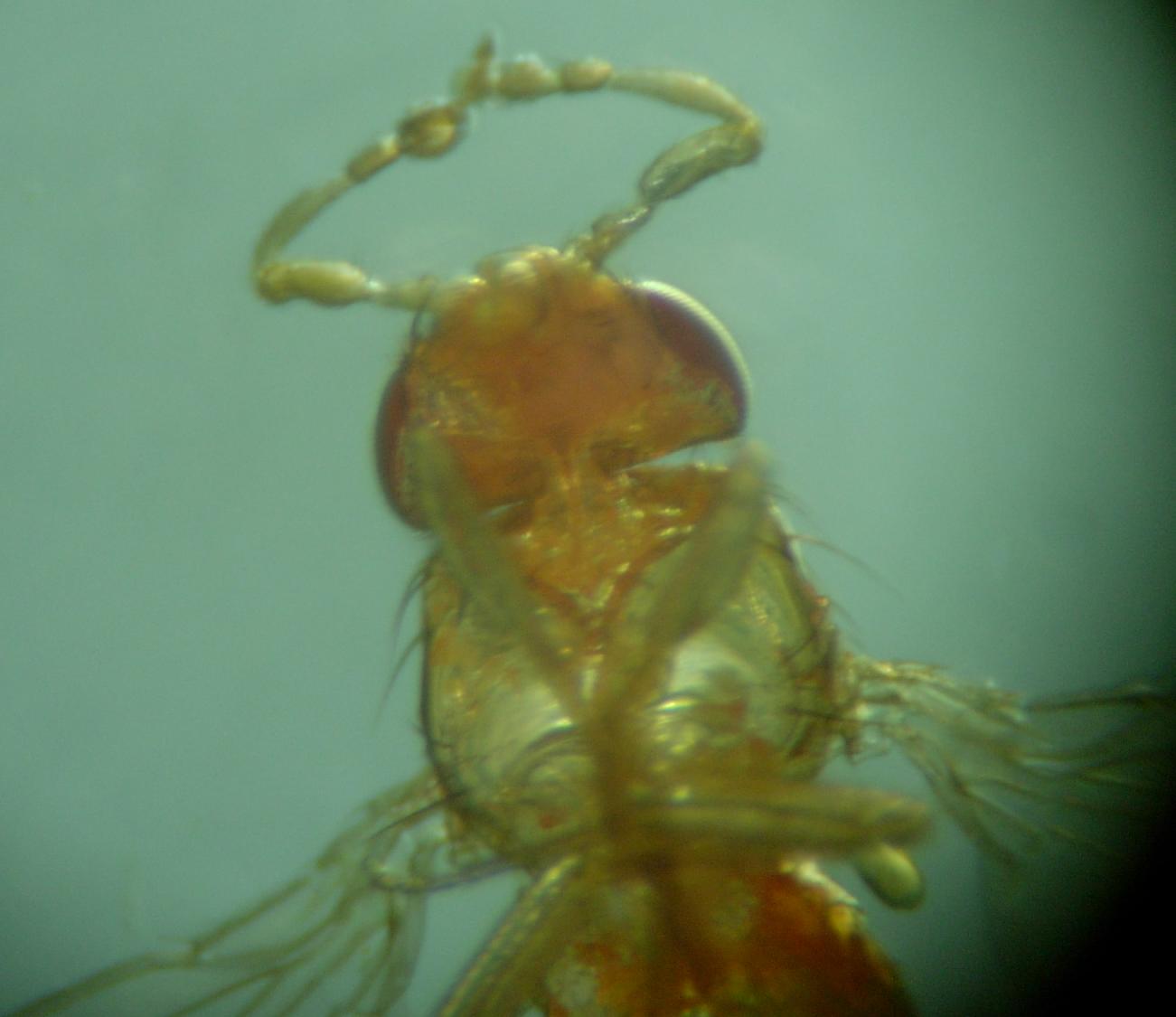|
Homeotic Genes
In evolutionary developmental biology, homeotic genes are genes which regulate the development of anatomical structures in various organisms such as echinoderms, insects, mammals, and plants. Homeotic genes often encode transcription factors, transcription factor proteins, and these proteins affect development by regulating downstream gene networks involved in body patterning. Mutations in homeotic genes cause displaced body parts (homeosis), such as antennae growing at the posterior of the fly instead of at the head. Mutations that lead to development of ectopic structures are usually lethal. Types There are several subsets of homeotic genes. They include many of the Hox genes, Hox and ParaHox genes that are important for segmentation (biology), segmentation. Hox genes are found in bilateral animals, including ''Drosophila'' (in which they were first discovered) and humans. Hox genes are a subset of the homeobox genes. The Hox genes are often conserved sequence, conserved across ... [...More Info...] [...Related Items...] OR: [Wikipedia] [Google] [Baidu] |
Evolutionary Developmental Biology
Evolutionary developmental biology (informally, evo-devo) is a field of biological research that compares the developmental processes of different organisms to infer how developmental processes evolved. The field grew from 19th-century beginnings, where embryology faced a mystery: zoologists did not know how embryonic development was controlled at the molecular level. Charles Darwin noted that having similar embryos implied common ancestry, but little progress was made until the 1970s. Then, recombinant DNA technology at last brought embryology together with molecular genetics. A key early discovery was of homeotic genes that regulate development in a wide range of eukaryotes. The field is composed of multiple core evolutionary concepts. One is deep homology, the finding that dissimilar organs such as the eyes of insects, vertebrates and cephalopod molluscs, long thought to have evolved separately, are controlled by similar genes such as ''pax-6'', from the evo-devo gene toolk ... [...More Info...] [...Related Items...] OR: [Wikipedia] [Google] [Baidu] |
Homeotic Selector Gene Complexes
In evolutionary developmental biology, homeosis is the transformation of one organ into another, arising from mutation in or misexpression of certain developmentally critical genes, specifically homeotic genes. In animals, these developmental genes specifically control the development of organs on their anteroposterior axis. In plants, however, the developmental genes affected by homeosis may control anything from the development of a stamen or petals to the development of chlorophyll. Homeosis may be caused by mutations in Hox genes, found in animals, or others such as the MADS-box family in plants. Homeosis is a characteristic that has helped insects become as successful and diverse as they are. Homeotic mutations work by changing segment identity during development. For example, the ''Ultrabithorax'' genotype gives a phenotype wherein metathoracic and first abdominal segments become mesothoracic segments. Another well-known example is ''Antennapedia'': a gain-of-function allele ... [...More Info...] [...Related Items...] OR: [Wikipedia] [Google] [Baidu] |
Homeosis
In evolutionary developmental biology, homeosis is the transformation of one organ into another, arising from mutation in or misexpression of certain developmentally critical genes, specifically homeotic genes. In animals, these developmental genes specifically control the development of organs on their anteroposterior axis. In plants, however, the developmental genes affected by homeosis may control anything from the development of a stamen or petals to the development of chlorophyll. Homeosis may be caused by mutations in Hox genes, found in animals, or others such as the MADS-box family in plants. Homeosis is a characteristic that has helped insects become as successful and diverse as they are. Homeotic mutations work by changing segment identity during development. For example, the ''Ultrabithorax'' genotype gives a phenotype wherein metathoracic and first abdominal segments become mesothoracic segments. Another well-known example is ''Antennapedia'': a gain-of-function allele ... [...More Info...] [...Related Items...] OR: [Wikipedia] [Google] [Baidu] |
Homeobox
A homeobox is a DNA sequence, around 180 base pairs long, that regulates large-scale anatomical features in the early stages of embryonic development. For instance, mutations in a homeobox may change large-scale anatomical features of the full-grown organism. Homeoboxes are found within genes that are involved in the regulation of patterns of anatomical development (morphogenesis) in animal Animals are multicellular, eukaryotic organisms in the Kingdom (biology), biological kingdom Animalia. With few exceptions, animals Heterotroph, consume organic material, Cellular respiration#Aerobic respiration, breathe oxygen, are Motilit ...s, fungus, fungi, plants, and numerous single cell eukaryotes. Homeobox genes encode homeodomain protein products that are transcription factors sharing a characteristic protein fold structure that binds DNA to regulate expression of target genes. Homeodomain proteins regulate gene expression and cell differentiation during early embryonic dev ... [...More Info...] [...Related Items...] OR: [Wikipedia] [Google] [Baidu] |
Carcinogen
A carcinogen is any substance, radionuclide, or radiation that promotes carcinogenesis (the formation of cancer). This may be due to the ability to damage the genome or to the disruption of cellular metabolic processes. Several radioactive substances are considered carcinogens, but their carcinogenic activity is attributed to the radiation, for example gamma rays and alpha particles, which they emit. Common examples of non-radioactive carcinogens are inhaled asbestos, certain dioxins, and tobacco smoke. Although the public generally associates carcinogenicity with synthetic chemicals, it is equally likely to arise from both natural and synthetic substances. Carcinogens are not necessarily immediately toxic; thus, their effect can be insidious. Carcinogens, as mentioned, are agents in the environment capable of contributing to cancer growth. Carcinogens can be categorized into two different types: activation-dependent and activation-independent, and each nature impacts their level ... [...More Info...] [...Related Items...] OR: [Wikipedia] [Google] [Baidu] |



